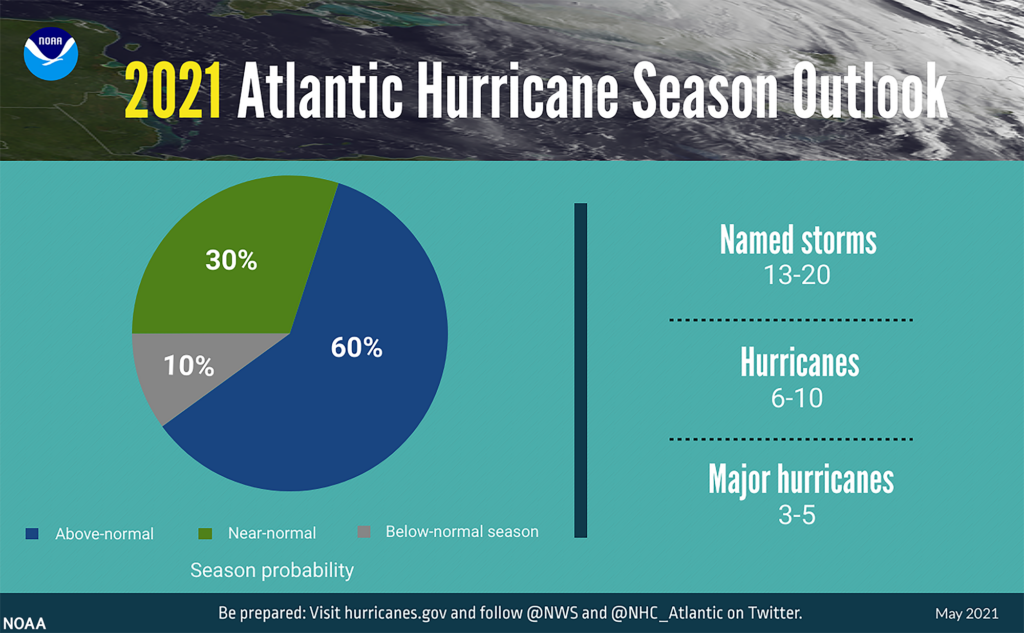Tropical cyclones are large, whirling storms that obtain their energy from warm ocean waters. Hurricanes are tropical cyclones that originate in the Atlantic Ocean, Caribbean Sea, Gulf of Mexico or the eastern North Pacific Ocean. Tropical storms have wind speeds between 39 and 73 mph, while hurricanes have wind speeds of greater than 74 mph. These storms form over warm waters. A general rule of thumb is that hurricanes will not form unless the water temperature is at least 80 degrees.
An average hurricane season produces 12 named storms, of which six become hurricanes, including three major hurricanes, with wind speeds greater than 111 mph.
An above-normal Atlantic hurricane season is expected this year. The National Oceanic and Atmospheric Administration prediction for 2021 is a likelihood of 13-20 named storms with sustained winds of at least 39 mph. Six to 10 of those are likely to become hurricanes, with winds of 74 mph or higher, including three to five major hurricanes.
The Atlantic hurricane season officially starts June 1 and lasts until Nov. 30. That is the time of year when most hurricanes occur — about 97% of them. But hurricanes can occur any month of the year. The calendar isn’t the important thing; the ocean temperatures and the lack of vertical wind shear are.
We already had our first named storm of the 2021 season. Tropical storm Ana formed on May 22, 10 days before the official start of the 2021 Atlantic hurricane season. This is the seventh consecutive year in which a tropical or subtropical cyclone formed before the official start of the season on June 1.
Steve Ackerman and Jonathan Martin, professors in the UW-Madison Department of Atmospheric and Oceanic Sciences, are guests on WHA radio (970 AM) at 11:45 a.m. the last Monday of each month


